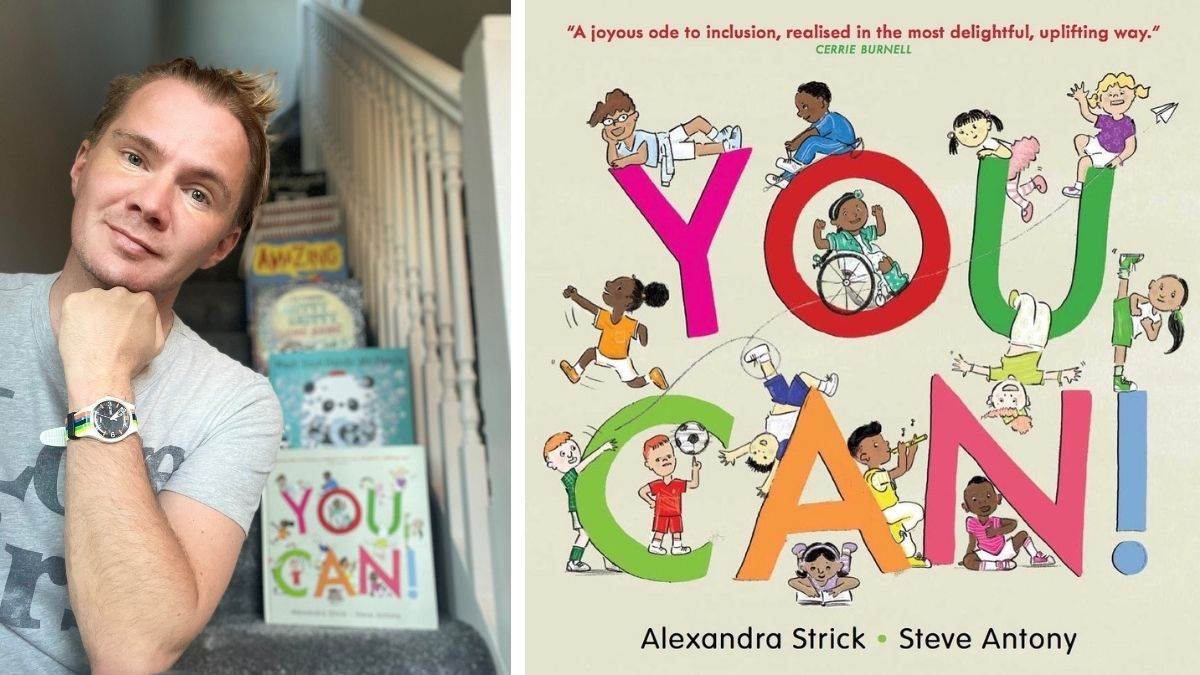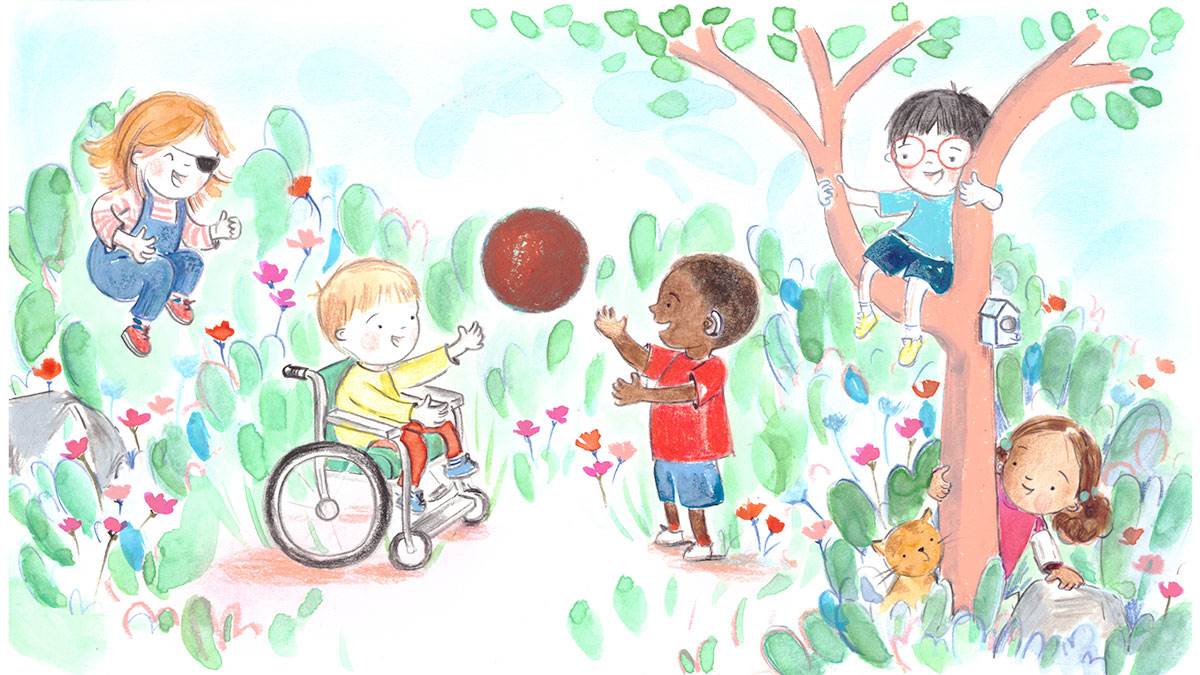"How can we ensure that children don't feel excluded?": Steve Antony on helping children see themselves in books
Published on: 5 Hydref 2021
Inclusive Minds founder and author Alexandra Strick speaks to picture book creator Steve Antony about their new book together, You Can - which seeks to empower children to be their unique and brilliant selves, no matter who they are.
 Steve Antony and the cover of You Can.
Steve Antony and the cover of You Can.
How in the case of You Can did you aim to include some disabled children historically excluded from the landscape?
You Can is indeed an inclusive book, but in many ways this fact is entirely incidental. A few week's ago, I met the book's young contributors in person for the very first time. Up until then all our meetings and such were done virtually due to COVID. One of the contributors, who you can see in the book's promo video, is a wheelchair user. She didn't want to be filmed in her wheelchair because she wanted to join her friends on the sofa, which is why it's so incredibly important to me and Alex that this book is first and foremost a book of positive, life-affirming messages for children and formed by children.
When developing the book's visual landscape, it wasn't just the young contributors who helped form the illustrative narrative. My own childhood and my experience as a SEND Support Worker influenced the drawings too, as did the lived experiences of some of Inclusive Mind's Inclusion Ambassadors. Also, I love being able to include characters who are based on or inspired by my friends and family. So it really wasn't a case of seeing how diverse and inclusive we could make this book. It actually happened quite naturally. I suppose the reason this book is so inclusive is because many different voices and lived experiences formed it.
 Illustration: Fiona Lumbers
Illustration: Fiona Lumbers
Can you give me a specific example or two of how you ensured authenticity in your illustrations?
As you know, in this book we see all 14 characters grow from babies to adults, page by page. There's a wheelchair user, for example, and I wasn't quite sure how to depict her as a toddler and infant. Would she be in a wheelchair, let's say, at age 4? Everyone's lived experience is different, whether you are a wheelchair user on not. For example, I wrote a list of questions to one of our young adult contributors who was also a wheelchair user. 'What age did you start using a wheelchair? Are you able to swim?', I asked.
Illustrating a narrative based on several lived experiences suddenly felt like a big responsibility! There was no way I was going to hazard a guess about how I should draw the wheelchair user, for example, in a setting that included a pool or adventure park.
Everything from whether to include a guide dog for the blind boy or at what age to add a hijab to the drawings of the Muslim girl were informed by the lived experiences of our contributors.
Inclusive Minds Inclusion Ambassadors were particularly helpful. I had so many questions and learned so much over the course of illustrating You Can!
There are some LGBT+ characters, too. But because I'm red-green colourblind, I needed extra help to ensure I got the colours right for all the flags in the colourful Pride scene - this is near the end of the book, at which point the characters are young adults. You'd think that as a gay person who has been to a gazillion pride marches that I'd already know all the colours.
Why is natural/casual inclusivity important to you as an author and illustrator?
Suffice to say, it's good for children to be able find themselves in books they read. Maybe inclusive books and casual inclusivity can help in cultivating a more naturally inclusive and empathetic society? Many of you reading this will know that authors and illustrators have been creating what we often refer to as inclusive books for decades. There are now hundreds of brilliantly inclusive books, although some may not be as accessible as others, and there are lots of amazing authors and illustrators making waves as I write this.
The main reason I wanted to illustrate You Can is because it's such an empowering piece of text. I had never seen anything quite like it. And the fact that the text was formed by children makes it all the more unique. I wish a book like this had existed when I was a child.
What's next for You Can?
We do have all sorts of exciting plans, including a little book tour, and we hope to share the book with lots of schools next year. But I think one of the most exciting things about this book is how the young contributors are empowering other children to think about what they can do. Already we've received some amazing artwork from children who felt inspired to draw what they can do. The young contributors have even created a website for the book - www.TheYouCanBook.com.
We're all really happy with what we've created and we hope that children (and adults) enjoy reading the book.
Read our review of You Can
Follow Steve on Twitter
Follow Alexandra on Twitter
Topics: Bookmark, LGBT+, Inclusive, Additional needs, Everyday life, Diversity (BAME), Features





